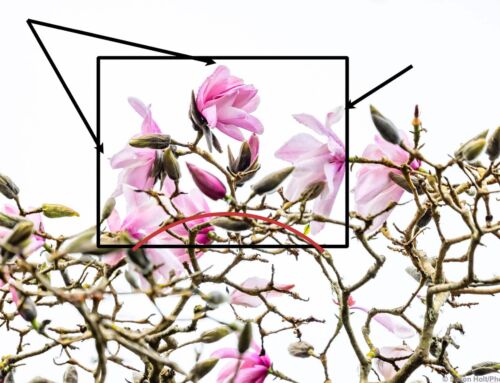For photographers working with fall foliage, the underlying structure of tree trunks and branches can provide subtle ways to hold photographs together.
Here in California late November is the peak of autumn color, but in most of the country the leaves are long gone. In early October the gorgeous white trunks of these White Birch trees in Vermont can give vertical rhythm, and with careful composition, they hold the photograph together.

Tapestry of Birch trees in fall color, Vermont
For tighter compositions without the long solid stripes of tree trunks, look for the lines behind the foliage. The branches will often be darker and will create a pattern.
Staghorn sumac (Rhus typhina) is a reliable large shrub for fall foliage. I found these in Hoyt Arboretum in Portland and spent long minutes looking to find a composition.

Staghorn Sumac (Rhus typhina) fall foliage and branch pattern, Hoyt Arboretum
This is one of the great joys of being a landscape photographer – we are required to stare longingly at beautiful things.
After a while I began to see a pattern that broke the composition into shapes, fitting together like a jigsaw puzzle.
Move this slider all the way to the right and try to discern the pattern of branches:
Before and After Slider
You might even call it the pattern of a stain glass window, but the idea is to give a flow inside the photograph, even if it seems to be abstract.
More exercises in composition can be found in the PhotoBotanic Garden Photography Workshop series of e-books found in the Store.









Leave A Comment